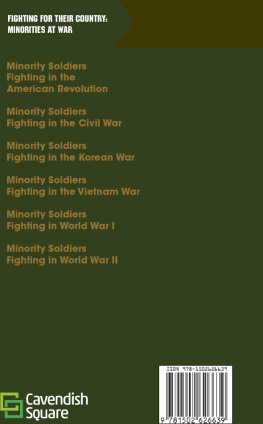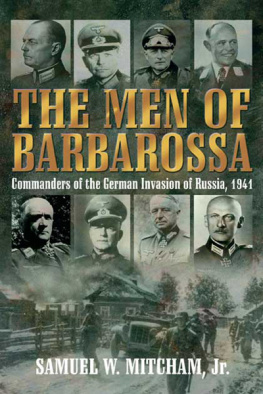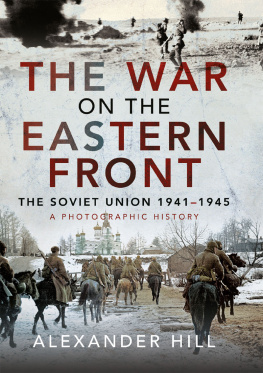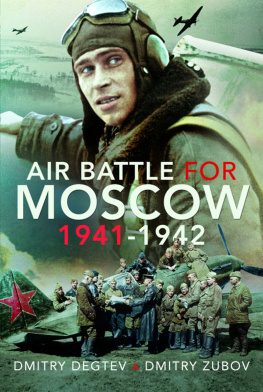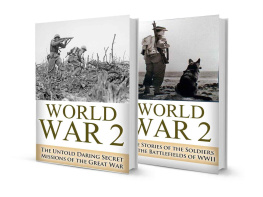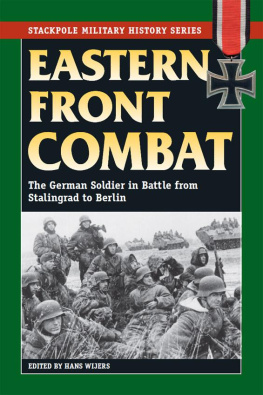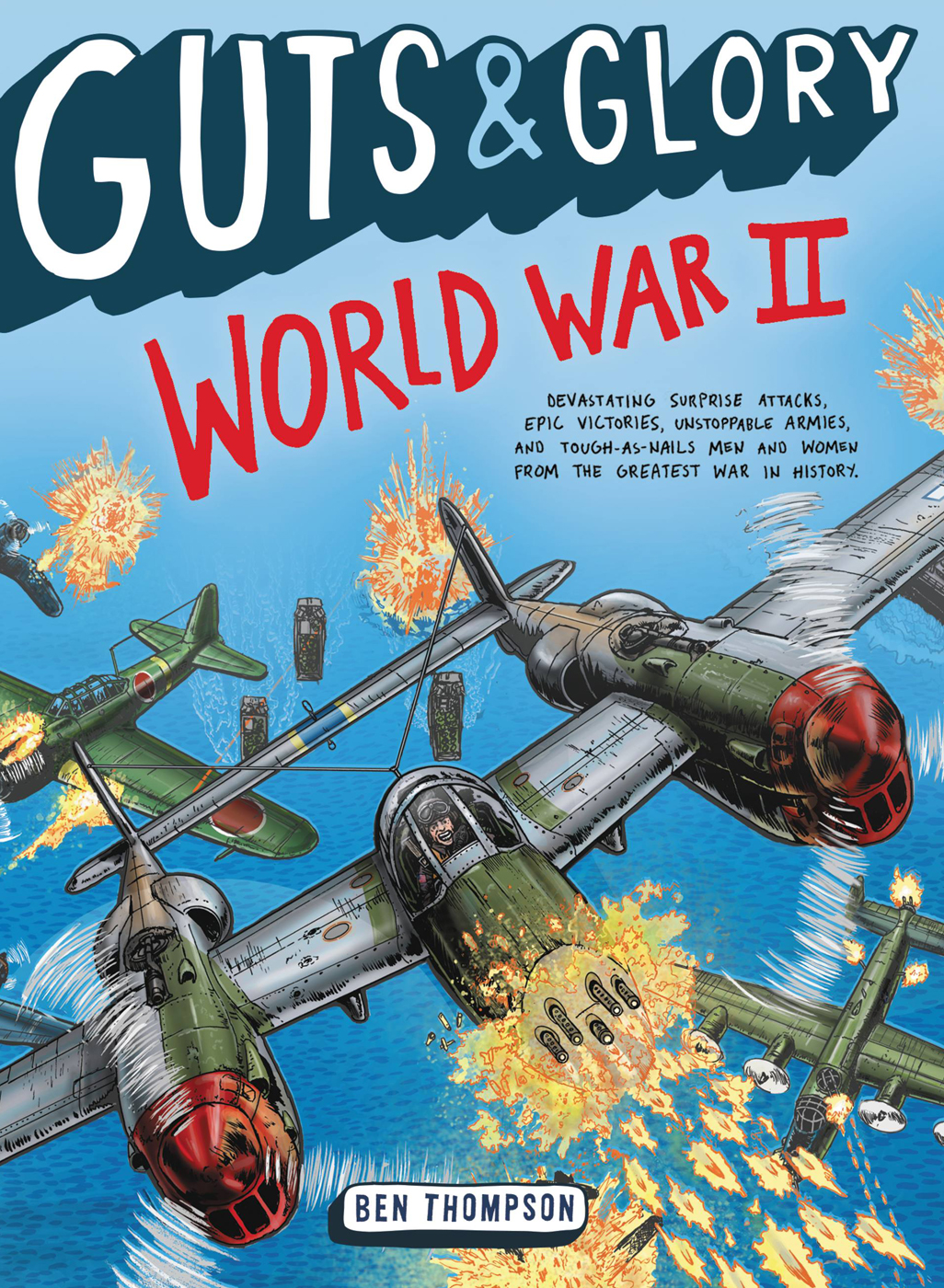
In accordance with the U.S. Copyright Act of 1976, the scanning, uploading, and electronic sharing of any part of this book without the permission of the publisher is unlawful piracy and theft of the authors intellectual property. If you would like to use material from the book (other than for review purposes), prior written permission must be obtained by contacting the publisher at permissions@hbgusa.com. Thank you for your support of the authors rights.
Text copyright 2016 by Ben Thompson
Illustrations copyright 2016 by C. M. Butzer
Text in excerpt from Guts & Glory: The American Revolution copyright 2017 by Ben Thompson
Illustrations in excerpt from Guts & Glory: The American Revolution copyright 2017 by C. M. Butzer
Cover art copyright 2016 by C. M. Butzer.
Cover copyright 2017 by Hachette Book Group, Inc.
Cover design by Maggie Edkins.
Hachette Book Group supports the right to free expression and the value of copyright. The purpose of copyright is to encourage writers and artists to produce the creative works that enrich our culture.
The scanning, uploading, and distribution of this book without permission is a theft of the authors intellectual property. If you would like permission to use material from the book (other than for review purposes), please contact permissions@hbgusa.com . Thank you for your support of the authors rights.
Little, Brown and Company
Hachette Book Group
1290 Avenue of the Americas, New York, NY 10104
lb-kids.com
Originally published in hardcover and ebook by Little, Brown and Company March 2016
Little, Brown and Company is a division of Hachette Book Group, Inc.
The Little, Brown name and logo are trademarks of Hachette Book Group, Inc.
The publisher is not responsible for websites (or their content) that are not owned by the publisher.
Image courtesy of the Library of Congress.
The Library of Congress has cataloged the hardcover edition as follows:Thompson, Ben, 1980
Guts & glory: World War II / Ben Thompson ; illustrations by C. M. Butzer. pages cm.(Guts & glory ; 3)
Includes bibliographical references and index.
Audience: Ages 812.
ISBN 978-0-316-32059-7 (hardcover) ISBN 978-0-316-32060-3 (ebook) ISBN 978-0-316-32199-0 (library edition ebook) 1. World War, 19391945Juvenile literature. I. Butzer, C. M., illustrator. II. Title. III. Title: World War II.
D743.7.T54 2016
940.54dc23
2015012917
ISBNs: 978-0-316-32058-0 (pbk.), 978-0-316-32060-3 (ebook)
E3-20170209-JV-PC
YOU ARE HERE TODAY
FOR THREE REASONS.
FIRST,
BECAUSE YOU ARE HERE TO DEFEND YOUR HOMES AND YOUR LOVED ONES.
SECOND,
YOU ARE HERE FOR YOUR OWN SELF-RESPECT, BECAUSE YOU WOULD NOT WANT TO BE ANYWHERE ELSE.
THIRD,
YOU ARE HERE BECAUSE YOU ARE REAL MEN AND ALL REAL MEN LIKE TO FIGHT.
General George S. Patton, Commander, US Third Army

My good friends, for the second time in our history, a British prime minister has returned from Germany bringing peace with honor. I believe it is peace for our time. We thank you from the bottom of our hearts. Go home and get a nice quiet sleep.
British prime minister Neville Chamberlain, September 30, 1938
O N J UNE 28, 1919, THE LEADERS OF F RANCE , Germany, Great Britain, and the United States met at an old palace outside Paris and signed the Treaty of Versailles, marking the official end of the First World War (which was just called the Great War before we had a second world war to compare it tomore on this in Europe. For the most part the war had been a draw, with both sides losing a ridiculous number of men for very little gain. But in the end, Germanys government was the one that finally collapsed in 1918, and it was replaced with guys who decided it made sense to stop fighting and end this horrible thing once and for all.
The Allied powers, particularly France, were eager to make sure Germany suffered for starting such a terrible war. So the terms of the treaty were more lopsided than a gorilla sitting on a teeter-totter. Big chunks of Germany were cut out and given to France, Denmark, Poland, and Belgium. Germans werent allowed to have an army bigger than a hundred thousand guys, and they couldnt have warplanes, tanks, or new battleships. They had to pay crazy huge amounts of cash to France and Britain, and sanctions and bills were imposed on them that would cripple any economy on earth.
German money became worthless. Factories closed. People lost their jobs. The country fell into poverty and depression. So you can imagine that to the German people, the terms of the deal were majorly harsh. Sure, theyd surrendered, but they hadnt really lost. No Allied soldiers had even set foot in Germany during the war. Plus, when the Germans were thinking about surrendering, the Allies had promised theyd go easy on them. And now this? What gives?
Into this situation stepped a man now pretty much universally accepted as the most evil person in history: Adolf Hitler. A failed artist from Austria who had served as a corporal in World War I, Hitler was, lets say, a little upset that Germany got the short end of the stick in the Treaty of Versailles. Looking at the once-proud German people suffering made him so angry that he wanted to kill basically everyone in the world.
Hitler was convinced that the leadership of Germany was weak and that the German people had been undermined by Jews and other groups of people he didnt like. Swearing to reverse the Treaty of Versailles, throw the Jews out, retake the lands Germany had lost, and bring the country back to the ranks of world powers, Hitler tried to overthrow the government in 1923 but was defeated and arrested. While in jail, he wrote a book about his beliefs, and before long it was circulating among unhappy Germans.
By 1933 Hitler had been released from jail and had become so popular that he was elected chancellor of Germany. When the president of Germany died a few months later, Hitler merged both offices under the title of Fhrer (which means leader), put himself in that office, and assumed total control over the German population.
His first move was to abolish every single political party other than his own, which was called the National Socialist German Workers Party (better known as the Nazis). Using a combination of powerful speeches, terrorizing secret police forces, and a mega-bombardment of Nazis are awesome propaganda, Hitler worked to undermine the Treaty of Versailles step-by-step. In 1935 he declared he was going to build weapons whether France wanted him to or not. In 1936 he moved troops into the Rhineland demilitarized zone (a section of Germany with no army or weapons allowed), hosted the Olympics (awarding Germany a ton of gold medals for all kinds of dumb things), sent troops to fight in the Spanish Civil War, and started hardcore cracking down on the rights of Jews living in Germany. Then in 1938 he absorbed Austria into his lands, which was fine with Austria because they were super into it.
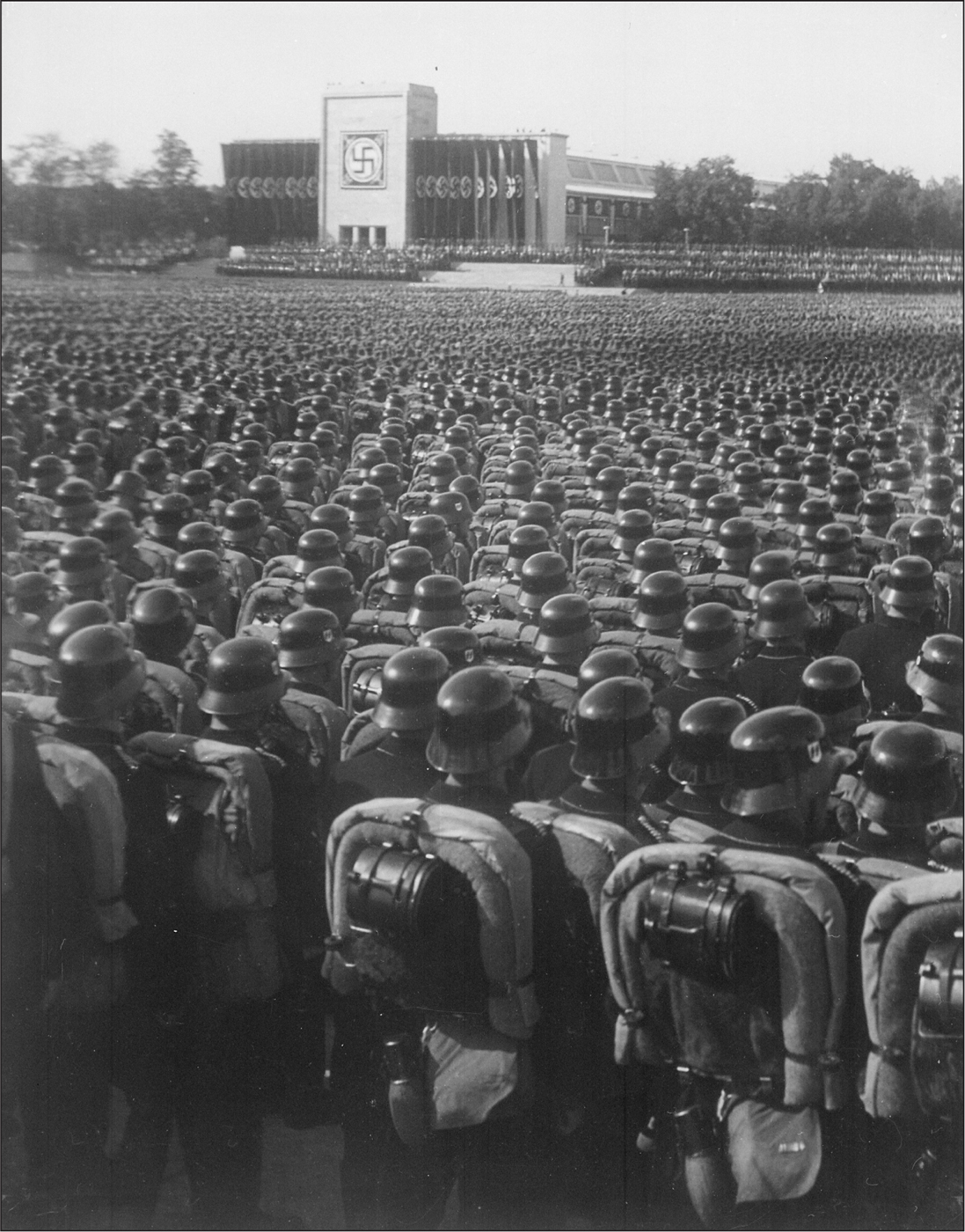
German soldiers watching Hitler speak at a rally in Nuremberg, 1935
Now, the British and the French werent all that pumped up about the idea of going into another long, bloody war with Germany, so for the most part they offered pretty lame opposition. When Hitler decided he wanted to annex (absorb) Czechoslovakia, the prime minister of Britain, Neville Chamberlain, met with Hitler, talked it over, and was like, Okay, well, I guess you can have it, but only if you promise to stop annexing countries. And Hitler was like, Okay, yeah, sure, sounds good, buddy, whatever you say. Then Chamberlain flew home to tell everyone that all wars were over forever, so hooray.


